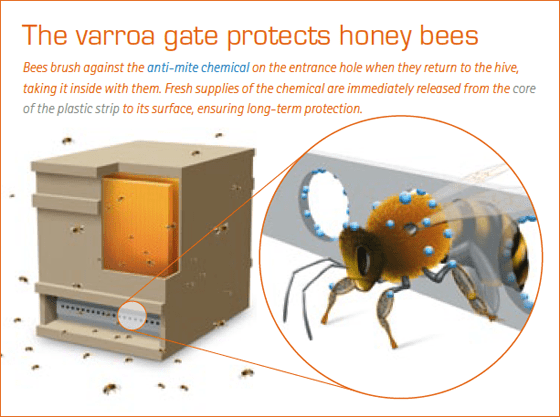By Amber Morin, Arizona Farm Bureau Field Manager and southern Arizona rancher with her family
Miticides, as the name implies, is an agent used to control mites. If you read my last article concerning honey bees and their unwelcome parasitic friend, the Varroa mite, you might have an idea as to why bees may need such a tool. The Varroa mite, lives off the blood of adult honey bees and larvae. It is transferred from bee to bee as they forage for nectar. However, the biggest problem with the Varroa mite, originally from Asia, is that it did not make an appearance in the U.S. until 1987.
It is a relatively new pest, and our Western honey bees have not developed an adequate defense mechanism against it. Per the APIS Information Resource Center, the Varroa mite is considered the most devastating parasite of honey bee colonies in existence. The mite is wholly dependent on the honey bee and cannot complete its life cycle without being in contact with the honey bees and repopulating using honeycomb.

As part of the National Pollinator Health Strategy, the Environmental Protection Agency (EPA) committed to helping beekeepers combat Varroa mites. The Strategy incorporates an expedition of the review of miticides for beekeepers to use. To date, the EPA has seventeen registered miticide products listed as safe for bee use online. In response to the need for bee protection companies are using their creativity to apply miticide in the most controlled and safe fashions possible. For example, Bayer’s scientists have been, and still are, working with bee researchers from Frankfurt University to develop the Varroa Gate, which is designed to prevent reinfection from foraging bees.
The Varroa Gate, pictured below, is a structure at the entrance to the hive. Every bee must climb through this gate when leaving or returning. The plastic strip is coated in miticide. Whenever a bee passes through the gate, it touches the edge. This transfers a mite poison to the bee and kills any mites it may be carrying, effectively protecting the hive from the mites and any diseases they may be carrying.

The active ingredient of the Varroa-Gate is Coumaphos, one of the seventeen EPA registered miticide products, in combination with specific non-active agents proved to be effective at killing the mites within 24 to 48 hours.
Safety studies, are a concern. But let’s put those concerns to the test, literally. All pesticides used in such applications methods as the Varroa Gate undergo extensive ecotoxicological testing and studies before they are registered and approved by the competent regulatory authorities like the EPA. Bayer uses both the basic laboratory tests and highly complex multi-site field studies where all possible kinds of effects to bee colonies are tested over several years.
If you liked this article:

